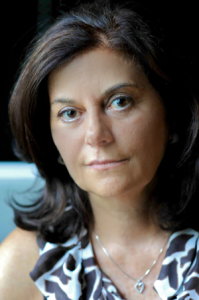Fugen Neziroglu, Ph.D., ABBP, ABPP, is the co-author of a recently published book, “Children of Hoarders: How to Minimize Conflict, Reduce the Clutter, and Improve Your Relationship,” (also available through Amazon.com and other booksellers). Dr. Neziroglu kindly agreed to answer a few questions from Children of Hoarders, Inc. about the new book and her experiences working with children of hoarders (COH). This is the second installment of our multi-part interview with Dr. Neziroglu. For more information about Dr. Neziroglu, see Part 1 of our interview, and for more information about her book, please see our earlier post, “Self-Help Book for Children of Hoarders.”
Relationships
How does being a child of a hoarder affect the child’s relationships with people outside the home?
COH are usually not able to bring people into their home while living in the house. Anything that will reveal the hoarding behavior and the family secret is avoided by all family members. The hoarder would not have it any other way, and the other family members are too embarrassed and believe the house is a reflection of them as well. There is a family secret that is kept by all involved. Usually neighbors and teachers do not know. The child feels embarrassed and is unwilling to tell anyone due to shame. Later on, if there is involvement of the court, neighbors, or court authorities, judges, custodians, guardians etc. the COH may feel embarrassed. At the same time, they see these outsiders as possible saviors. They are initially hopeful, but learn quickly that not much is likely to be accomplished for them. Their hope diminishes rather quickly.
How might a COH manage conversations with outsiders who place responsibility for a parent’s living conditions on the COH?
COH have to know that they are not responsible for changing their parent’s behavior—even professionals have difficulty changing hoarding behavior! If questioned by outsiders as to how they let their parent live that way, COH need to tell outsiders that hoarding is an illness, and that it is very resistant to change. It is not a lifestyle choice, but a disorder like depression, anxiety or autism. Just as one would not expect an autistic child or a patient suffering from major depression to change their circumstances easily, it is just as hard to get a parent with a hoarding problem to de-clutter.
Do you have any general advice for adult children of hoarders who are trying to escape or to manage feelings of guilt and responsibility?
I know that often COH are blamed for the hoarding behavior. That is very unfair. Not only are COH victims over a situation they have no control, but to blame the COH is to victimize them twice. Every COH needs to know they did not choose to have a parent as a hoarder, nor did they choose to be abused, bullied, or live in squalor. They did not do anything wrong, nor could they change their parents situation. It is not their responsibility and they should know that even professionals have difficulty dealing with hoarding. Most often, hoarders lack insight into their illness and they do not want treatment, nor do they want change. COH may experience guilt over not changing their parent’s behavior, but guilt implies that the person has done something wrong and reparation is needed—whereas the COH has done nothing wrong. Something has been done to them.
You’ve participated in hoarding interventions, some of which have been featured on television shows like TLC’s “Hoarding: Buried Alive“. How did you get involved with the television show? How is a televised intervention different from other interventions?
I did the first TLC television program. I was thrilled to learn that there was a producer, Amy Doyle, who was interested in hoarding. I have always been a believer that the media is important in disseminating information to the public who then can educate the professionals. Years ago, when no one heard of Obsessive Compulsive Disorder (OCD) and later, Body Dysmorphic Disorder (BDD), I always sought the media for dissemination of information. We can certainly criticize the media on how they may depict extreme cases of hoarding or because it is not realistic; that those who appear on shows are different than typical hoarders; but we do need to admit that hoarding has become a household term. It is now a recognized disorder and the secret is out. In 2004, I wrote the first book on hoarding, “Overcoming Compulsive Hoarding”, and Amy from TLC got interested, as did many writers who had parents who were hoarders and they wanted to talk about it. Amy asked me to come to Ohio to work with a family who had been estranged due to hoarding. On TV we brought the family together, and the mother (the hoarder) started talking about how as a little girl she had seen her father burn all her belongings when they moved. No one in the family knew about this. It was the first time the mother spoke about it and it was a turning point. It all happened on TV and then the rest is history—one show followed another.
End of Part 2. To be continued…

